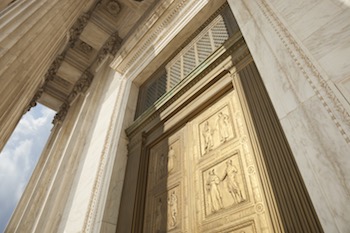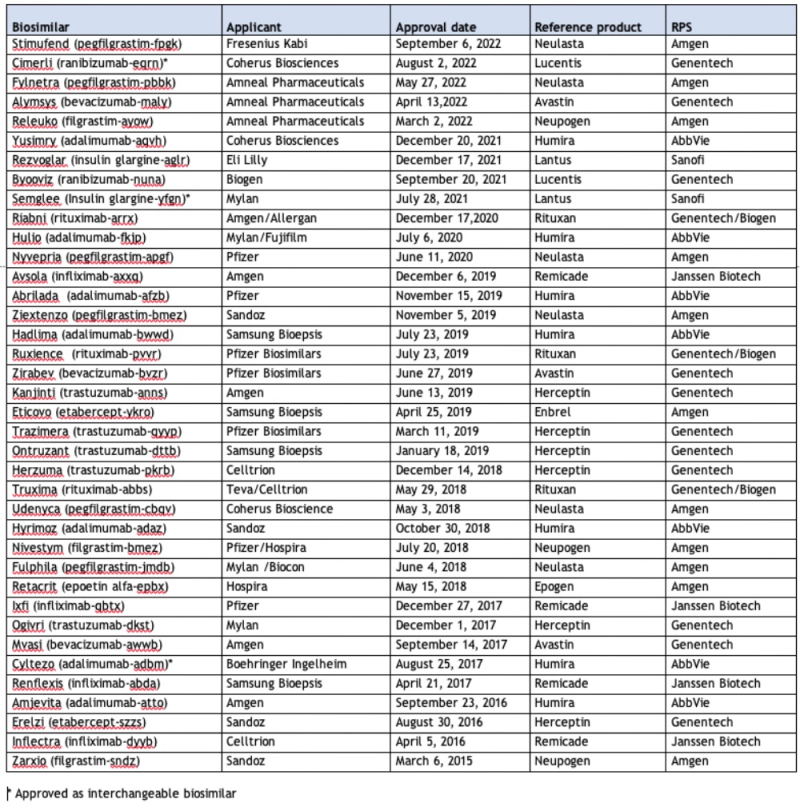Rader’s Ruminations – Patent Eligibility, Part 1: The Judge-Made ‘Exceptions’ are Both Unnecessary and Misconstrued
“The sleight of hand to get from Einstein and Newton to Prometheus deserves a monumental award for prestidigitation but would not get a passing grade on a first-year law school essay.”
In supreme irony, the U.S. Supreme Court lists the three exceptions to statutory patent eligibility in Chakrabarty, Diamond v. Chakrabarty, 447 U.S. 303 (1980) — the case most famous for the observation that Thomas Jefferson’s statutory language from the 1793 Act (still in place today) covers “anything under the sun made by man.” Id. at 309. While construing Jefferson’s “broad” statutory language in 35 U.S.C. 101 with “wide scope,” the Court noted:
“The laws of nature, physical phenomena, and abstract ideas have been held not patentable.”
Id. The Court tries to support this listing with a string citation to several cases — each standing for something different than an exception from statutory language. Still, to ensure clarity, the Court gives examples: “a new mineral discovered in the earth or a new plant found in the wild is not patentable subject matter.” Likewise, Einstein could not patent his celebrated law that E=mc2, nor could Newton have patented the law of gravity.” Id. So far so good, but this classic example of the Court trying to sound informed and competent out of its comfort zone reemerges 30 years later to replace (and effectively overrule) the statutory rule that governed for over 200 years and remains in Title 35.
At the outset, these exceptions are completely unnecessary. No example exists of an inventor trying to claim relativity or gravity. Instead of examining the cases in the Chakrabarty string- cite justifying the “exceptions,” it is perhaps enough to observe that any natural phenomenon (the new mineral or new plant) would be, by definition, in prior existence and thus not available for patenting. And the same applies for natural laws. The earliest of those string-cite cases, Le Roy v. Tatham, 55 U.S. 156 (1853), certainly does not create a category of ineligible subject matter, but instead articulates “a new property discovered in matter, when practically applied, in . . . a useful article . . . is patentable.” Id. at 174-75 [emphasis supplied]. That case upheld a patent on a lead alloy for use in pipes. Thus, even if the invention in Tatham featured use of natural properties or natural law, the new and useful application of those laws and properties deserved patent protection. This case articulated well the statutory rule: an uninventable property or principle was not eligible, but an application of those properties and laws could be inventive (if new).
And, of course, this Tatham rule makes sense: every invention must employ natural phenomena operating according to natural laws. Stated more directly, no one (beyond the Creator) can invent a natural phenomenon or a natural law. On the other hand, every inventor must use nature to advance technology. Le Roy v. Tatham said directly that natural “principles” cannot be invented but the new and useful application of those laws is the essence of invention. Once again, a listing of natural phenomena or laws as exceptions to the statute was wholly unnecessary.
‘Abstract’
The term “abstract” in the Court’s listing needs a little more explanation but it goes back to the 1853 Tatham case as well. Explaining its rule that applications are eligible but natural principles cannot be invented, Tatham opined: “a principle, in the abstract, is a fundamental truth; an original cause; a motive; these cannot be patented.” Id. at 175. [emphasis supplied]. In context, this Tatham dicta only excluded a natural principle that was not applied. An unapplied principle remained in the domain of uninventable nature. As you can see from both the earlier quoted dicta and the holding of Tatham, an applied principle of nature would not be abstract.
Later, the concept of abstractness would outgrow a definition. Without a limiting definition, see, Alice v. CLS Bank, 573 U.S. 208 (2014)(“. . .we need not labor to delimit the precise contours of the “abstract ideas” category in this case”) the Court stretched abstractness to tower over the entire statute and cast its chilling shadow over invention as a whole. When abstractness first appeared in judicial dicta, however, it had a definition: it meant simply “unapplied.”
Over a century after Tatham, when the Court first lists the three exceptions together, Parker v. Flook, 437 U.S. 584 (1978), an abstract principle loses the defining context of an unapplied feature of nature and becomes simply “an abstract idea.” Id. at 598, — again ironically labeled as “long-established” and “not patentable subject matter.” Id.
Because an undefined abstractness exception has grown to obliterate much of the 231-year-old statute (where is stare decisis when it might mean something?), this brief article will briefly examine the basic underpinning of “modern” abstractness. At least with software and computer process inventions, the mathematical exception created by Gottschalk v. Benson, 409 U.S. 63 (1972) underpins most of the ineligibility determinations. Computer processes, according to the faulty logic, are just mathematics and thus “abstract” (mostly because that modern concept has no legal definition).
Long before Benson, however, the Supreme Court confronted its first case involving mathematical formulas. The antenna invention in Mackay Radio & Telegraph v. Radio Corp. of America, 306 U.S. 86 (1939), employed a mathematical formula. The Court observed: “While a scientific truth, or the mathematical expression of it, is not a patentable invention, a novel and useful structure created with the aid of scientific truth may be.” Id. at 94. [emphasis supplied]. Thus, long before Benson and Alice v. CLS Bank, 573 U.S. 208 (2014), the Court had stated clearly that application of mathematics may be eligible subject matter. Sadly, the Court in this area picks some precedents and ignores others to achieve a preconceived result.
Misconstrued ‘Exceptions’
The epitome of blind, but deliberate, mischaracterization of the exceptions occurs in the “mother-of-patent-eligibility” mistakes, namely Mayo Collaborative Svc. v. Prometheus Labs. Inc., 566 U.S. 66 (2012). Again, with supreme arrogance, the Court recites again that Einstein and Newton could not patent the natural laws they explicated. The key observation is that “the ineligible invention” in these examples is the natural law itself — relativity and gravity! No one would contend that an uninventable principle can acquire a patent.
In the Mayo case, however, Prometheus does not purport to patent a natural law at all. Prometheus is not claiming the law of metabolism or the law of anything. In fact, the whole invention involves regulating a man-made drug to treat dangerous conditions that vary from patient to patient. Where is the claim to preempt an uninventable law of nature? In fact, what law of nature did Prometheus claim at all?
The Court in Mayo does not identify a uninventable law of nature claimed by Prometheus. Instead, it ducks and dodges:
“Prometheus’s patents set forth laws of nature — namely relationships between concentrations of certain metabolites in the blood and the likelihood that a dosage of a thiopurine drug will prove ineffective or cause harm.
Id. . Wow! Is this legal reasoning? According to the Court, Prometheus does not claim a law of nature, but “sets forth” (what does that mean?) “laws of nature” (an unspecified plural; how many and which laws does it purport to claim as Newton might gravity?). It gets worse. The “laws” are identified as “relationships” in the blood and “likelihoods” of outcomes. A natural law is a relational likelihood?
How does the Court get from bars on Einstein and Newton to Prometheus setting forth likelihoods and relationships? It actually does not even try, but just concludes that Prometheus “sets forth natural laws (with relationships and likelihoods)” and that is enough! Indeed, Prometheus’s claims actually recite administering man-made thiopurine (hardly a danger to universal natural principles), determining levels, and regulating targets within ranges (less than about 230 pmol or greater than about 400 pmol) to ensure the safety and effectiveness of personalized medicine. Where is the claim preempting an entire universal natural law? This claim recites a personalized application of relationships and likelihoods!
The sleight of hand to get from Einstein and Newton to Prometheus deserves a monumental award for prestidigitation but would not get a passing grade on a first-year law school essay.
The Tragic Result of Unnecessary Dicta
The Supreme Court, of course, enjoys the prerogative to interpret and correct all statutory law, including patent law. Thus, the Supreme Court has no obligation to follow its earlier interpretations of statutes if it detects some error or misconstruction in its earlier case law. In the Mayo case, Prometheus followed the statutory rule of more than two centuries by proving that it did not claim any natural laws but applied natural laws to achieve new and transformative results. In theory, the Supreme Court could change that 200-year-old rule if it was an error or misconstruction. But instead, the Court changed the rule to accommodate “exceptions” not found in the statute at all — exceptions that were unnecessary in the first place and contorted beyond recognition from their original innocuous inclusion in the dicta of earlier cases. At a minimum, the Court owes Jefferson, elected legislators, and its own 200-year-old rule a little more respect.
In sum, the Court invokes the unnecessary exceptions, but does not apply them honestly; instead, it deliberately misconstrues and expands them to substitute their preconceived result for Jefferson’s statutory rule. The judge-made exceptions swallow the rule. Tragically, the exceptions are not even the forbidden eligibility categories that earlier judges made in the first place, but unexplained mutations of unnecessary Court dicta.






